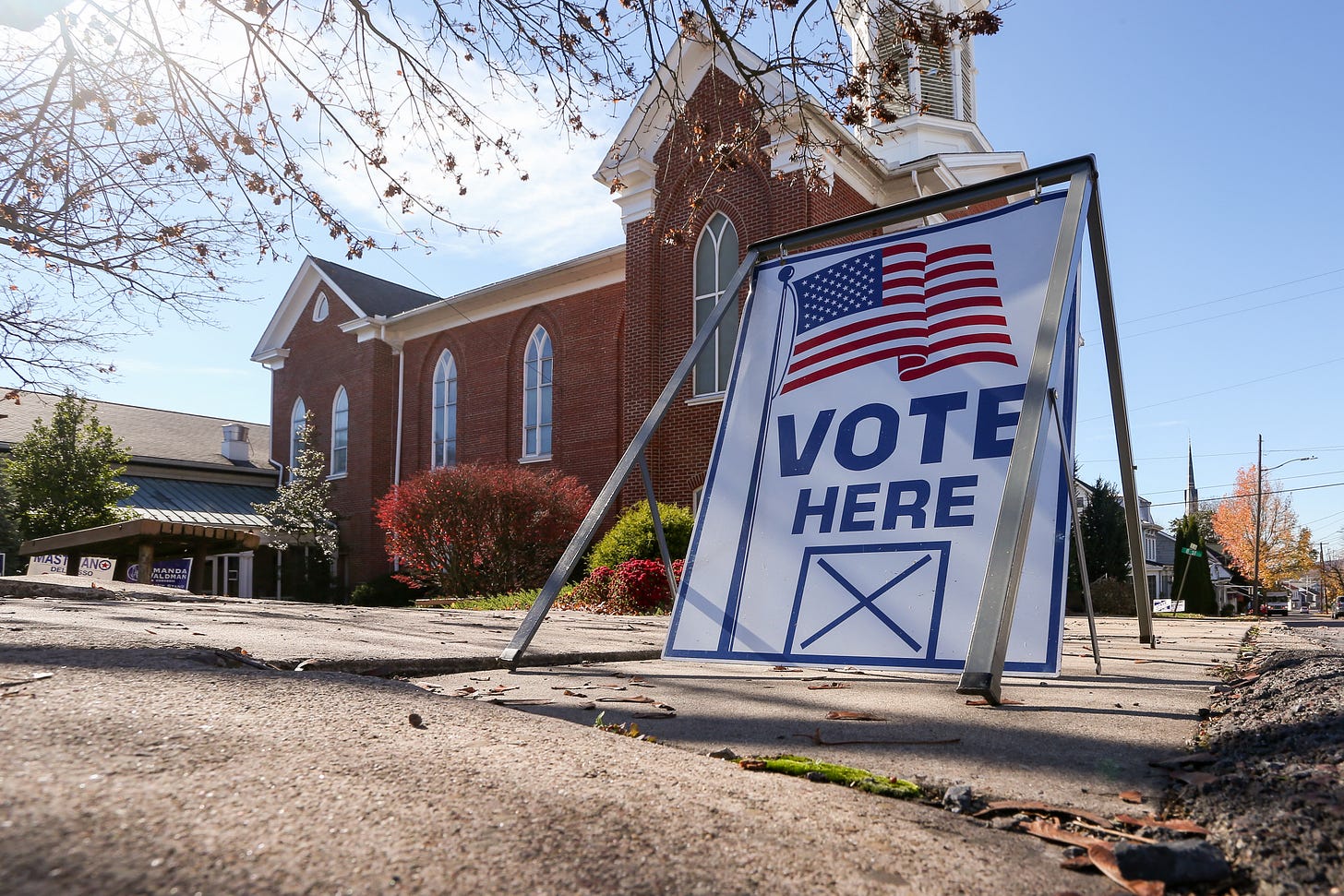The Five Counties to Watch in 2024
These battleground-state bellwethers could decide the election.

SEVEN SWING STATES will decide the presidential election: Arizona, Georgia, Michigan, Nevada, North Carolina, Pennsylvania, and Wisconsin. Two of those states are dominated by huge counties home to their largest cities: Clark County, home to Las Vegas, in Nevada; and Maricopa County, home to Phoenix and environs, in Arizona. In each of the other five swing states, though, there’s one county to watch for signs of which way the state will go.
Erie County, Pennsylvania.
Both vice presidential candidates, Tim Walz and JD Vance, have visited Erie recently, a sign of how important this old industrial county (population 270,876) on Lake Erie is to both campaigns. Donald Trump won Erie by 2 percent when he won Pennsylvania in 2016 and lost it 1 percent in 2020 when the state went for Biden. The county is home to many of the white, working-class Rust Belt voters both parties have been competing over for years, but there’s not much either side can do to restore its former industrial glory. The Biden administration’s $25 million federal investment in an industrial corridor hasn’t generated any noticeable bump in political support for the administration, especially among older voters (18 percent of the county’s population is over 65). Even with major investments in manufacturing jobs, it’s just hard to get retired voters to take their minds off inflation, gas prices, and retirement benefits.
Oakland County, Michigan.
This big suburban county just northwest of Detroit (population 1,274,395) has long been a Democratic stronghold. Unlike Erie County, the question isn’t who wins it, but by how much. Trump needs to cut into Kamala Harris’s margins to win the state. With a racially, educationally, and economically diverse population, Oakland County is a microcosm of Michigan in 2024. And you don’t need to look any further than the last two presidential elections to see how important it is: Trump won Michigan by about 11,000 votes in 2016, and lost Oakland County by 54,000. Four years later, he lost Michigan by about 154,000 in 2020, and lost Oakland County by 108,000. Trump’s vote total in Oakland increased by almost 13 percent between 2016 and 2020, but Biden was able to garner more than 26 percent more votes than Hillary Clinton had. Harris will have to hope she can juice even more Democratic turnout.
Door County, Wisconsin.
An unusual bellwether—very small (population 30,066), very white—the “Cape Cod of the Midwest” has voted for the winner of every presidential election since 1996, and all but one since 1980. In 2016, Trump won the county (a peninsula just north of Green Bay) with 49.3 percent of the vote compared to Clinton’s 46.2 percent. In 2020, Trump’s vote share diminished slightly to 48.6 percent (even while his gross vote total increased), but Biden was able to win 50 percent of the vote on the way to flipping the state from red to blue. Door County therefore encapsulates some of the dynamics of the nationwide race: Trump is unlikely to win the popular vote, so he needs to drive down Harris’s support and hope to eke out an Electoral College victory again. Harris, meanwhile, needs to make up for her softer numbers with black and Hispanic voters by improving her margins with white voters and topping 50 percent of the popular vote, at least.
Union County, North Carolina.
This county just east of Charlotte (population 238,267) has long been a center of Carolina dirt car racing, but it has also become the suburban home of many Charlotte bankers, with the average single-family home going for $409,000 and the median household income at $94,000. The population change has been incredible: Since 2010, the population has doubled. And Trump beat Biden in Union County by a 61–37 margin in 2020. But part of why North Carolina is in play in this election is because of growth in the tech and banking sectors in Raleigh-Durham and Charlotte, along with an influx of (presumably more Democratic-leaning) retirees from the Midwest and Northeast. The massive population change North Carolina has seen in the last four years makes it hard to predict how the elections will turn out. Maybe all the young, educated, progressive voters in the Research Triangle will be enough to flip the state blue for the first time since 2008 (remember that Trump won the state in 2020 by fewer than 75,000 votes). Possible, yes; likely, no.
Cobb County, Georgia.
If you want to see how Georgia turned blue in the last election, look no further than the Atlanta metro area. And if you want to drill a little deeper, look to Cobb County, a growing area with 766,149 people. Clinton won the county in 2016 by just 2 percent, and Biden won it in 2020 by 14 percent. Put another way: Trump never would have needed to pressure and threaten Georgia Secretary of State Brad Raffensperger to “find” him 11,780 votes if he hadn’t lost Cobb County by a whopping 56,000 votes. Trump needs to get closer to 50/50 in these Atlanta suburbs this time around, but that will be tough. While Harris isn’t polling as well with black voters as Biden did, she may pick up more votes in the white, highly educated, affluent Atlanta suburbs. But if she can come close to Biden-sized numbers in Cobb County (48 percent white, 27 percent black, 15 percent Hispanic), she could win Georgia, and likely the presidency.



